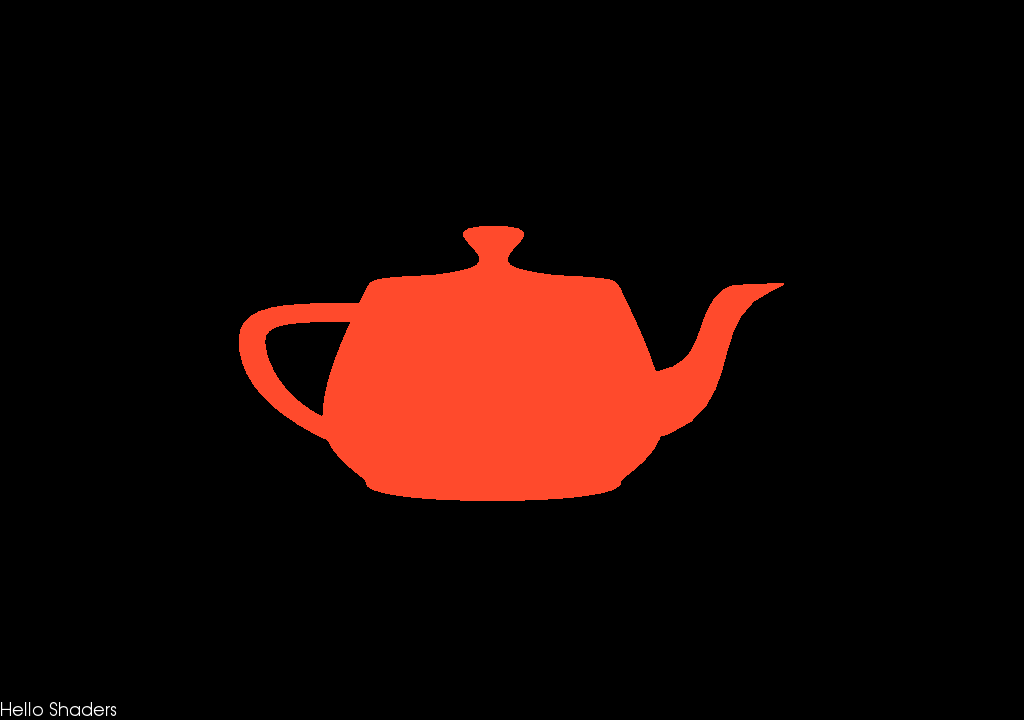Note
Click here to download the full example code
Varying Color¶
This example shows how to use shaders to generate a shaded output. We will demonstrate how to load polydata then use a custom shader calls to render a custom shaded model. First, a bunch of imports.
from fury import window, ui, io, utils
import vtk
Let’s download and load the model
from fury.data.fetcher import fetch_viz_models, read_viz_models
fetch_viz_models()
model = read_viz_models('utah.obj')
Out:
Dataset is already in place. If you want to fetch it again please first remove the folder /Users/koudoro/.fury/models
Let’s start by loading the polydata of choice. For this example we use the standard utah teapot model. currently supported formats include OBJ, VKT, FIB, PLY, STL and XML
utah = io.load_polydata(model)
utah = utils.get_polymapper_from_polydata(utah)
utah = utils.get_actor_from_polymapper(utah)
mapper = utah.GetMapper()
To change the default shader we add a shader replacement. Specify vertex shader using vtkShader.Vertex Specify fragment shader using vtkShader.Fragment
mapper.AddShaderReplacement(
vtk.vtkShader.Vertex,
"//VTK::ValuePass::Dec",
True,
"""
//VTK::ValuePass::Dec
out vec4 myVertexVC;
""",
False
)
mapper.AddShaderReplacement(
vtk.vtkShader.Vertex,
"//VTK::ValuePass::Impl",
True,
"""
//VTK::ValuePass::Impl
myVertexVC = vertexMC;
""",
False
)
mapper.AddShaderReplacement(
vtk.vtkShader.Fragment,
"//VTK::Light::Dec",
True,
"""
//VTK::Light::Dec
uniform float time;
varying vec4 myVertexVC;
""",
False
)
mapper.AddShaderReplacement(
vtk.vtkShader.Fragment,
'//VTK::Light::Impl',
True,
"""
//VTK::Light::Impl
vec2 iResolution = vec2(1024,720);
vec2 uv = myVertexVC.xy/iResolution;
vec3 col = 0.5 + 0.5 * cos((time/30) + uv.xyx + vec3(0, 2, 4));
fragOutput0 = vec4(col, 1.0);
""",
False
)
Let’s create a scene.
scene = window.Scene()
global timer
timer = 0
The timer will call this user defined callback every 30 milliseconds.
We can use a decorator to callback to the shader.
Let’s add a textblock to the scene with a custom message
tb = ui.TextBlock2D()
tb.message = "Hello Shaders"
Change the property of the actor
utah.GetProperty().SetOpacity(0.5)
Invoke callbacks to any VTK object
mapper.AddObserver(window.vtk.vtkCommand.UpdateShaderEvent,
vtk_shader_callback)
Show Manager
Now that all the elements have been initialised, we add them to the show manager.
current_size = (1024, 720)
showm = window.ShowManager(scene, size=current_size, reset_camera=False)
showm.initialize()
showm.add_timer_callback(True, 30, timer_callback)
scene.add(utah)
scene.add(tb)
interactive = False
if interactive:
showm.start()
window.record(showm.scene, size=current_size, out_path="viz_shader.png")

Total running time of the script: ( 0 minutes 0.157 seconds)